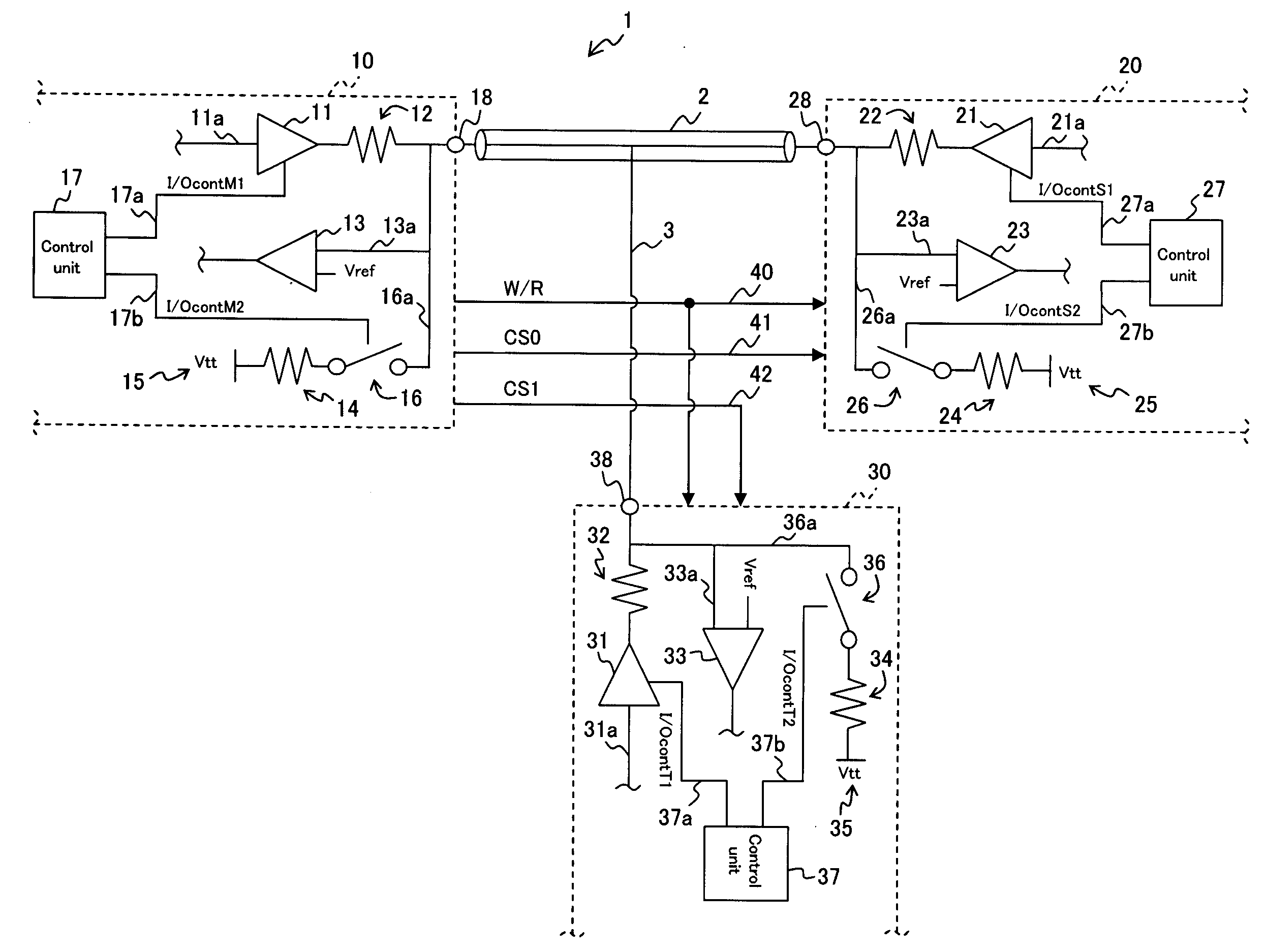Bidirectional transmission circuit and sending/receiving element
a transmission circuit and bidirectional technology, applied in the field of bidirectional transmission circuits, can solve the problems that the high-speed transmission of data suppressing signal reflection and the reduction of power consumption cannot be realized simultaneously, and achieve the effect of reducing power consumption and low power consumption
- Summary
- Abstract
- Description
- Claims
- Application Information
AI Technical Summary
Benefits of technology
Problems solved by technology
Method used
Image
Examples
Embodiment Construction
[0027] An embodiment of the present invention will be described below with reference to drawings.
[1] An Embodiment of the Present Invention
[0028] [1-1] Configuration
[0029] First, a configuration of a bidirectional transmission circuit 1 as an embodiment of the present invention will be described with reference to FIG. 1.
[0030] As show in FIG. 1, a bidirectional transmission circuit 1 is comprised of a transmission bus 2, a signal line 3, a first sending / receiving element 10, a second sending / receiving element 20, a third sending / receiving element 30, a Write / Read signal line (hereinafter referred to as a control signal line) 40, a first CS (Chip Select) signal line 41, and a second CS signal line 42.
[0031] The transmission bus 2 transmits (transfers) signals (data) in both directions.
[0032] The first sending / receiving element 10 is an element (chip; for example, the CPU (Central Processing Unit) side) connected to one end of the transmission bus 2 to operate as a main control ...
PUM
 Login to View More
Login to View More Abstract
Description
Claims
Application Information
 Login to View More
Login to View More - R&D
- Intellectual Property
- Life Sciences
- Materials
- Tech Scout
- Unparalleled Data Quality
- Higher Quality Content
- 60% Fewer Hallucinations
Browse by: Latest US Patents, China's latest patents, Technical Efficacy Thesaurus, Application Domain, Technology Topic, Popular Technical Reports.
© 2025 PatSnap. All rights reserved.Legal|Privacy policy|Modern Slavery Act Transparency Statement|Sitemap|About US| Contact US: help@patsnap.com



